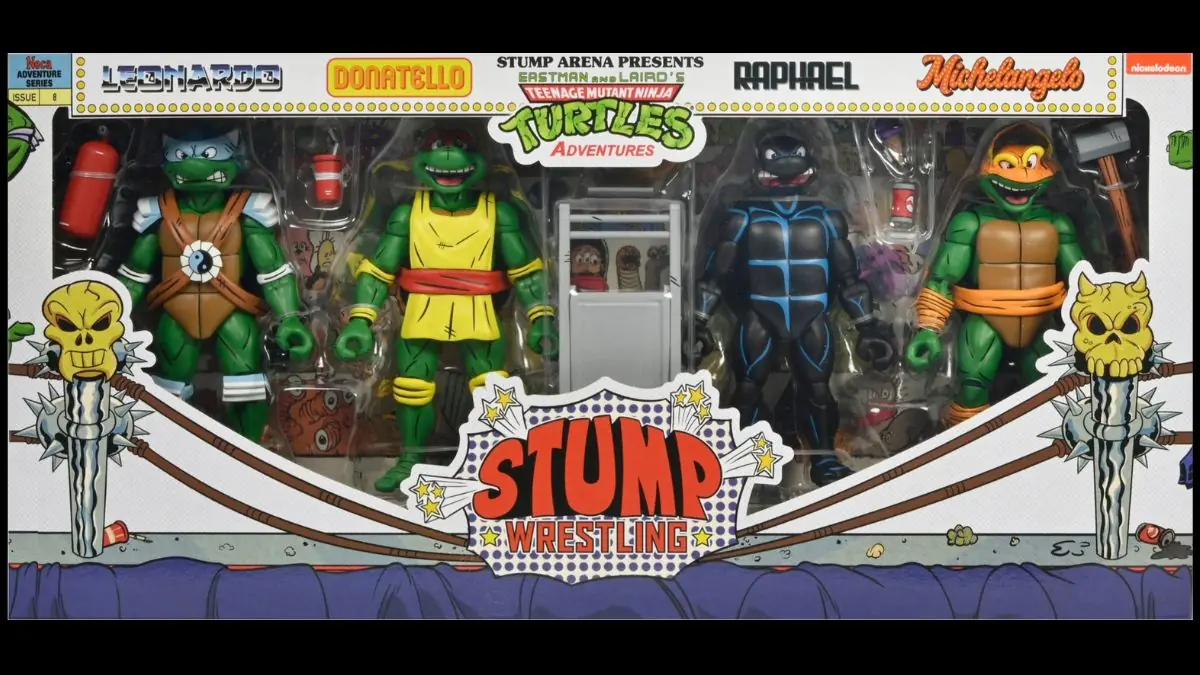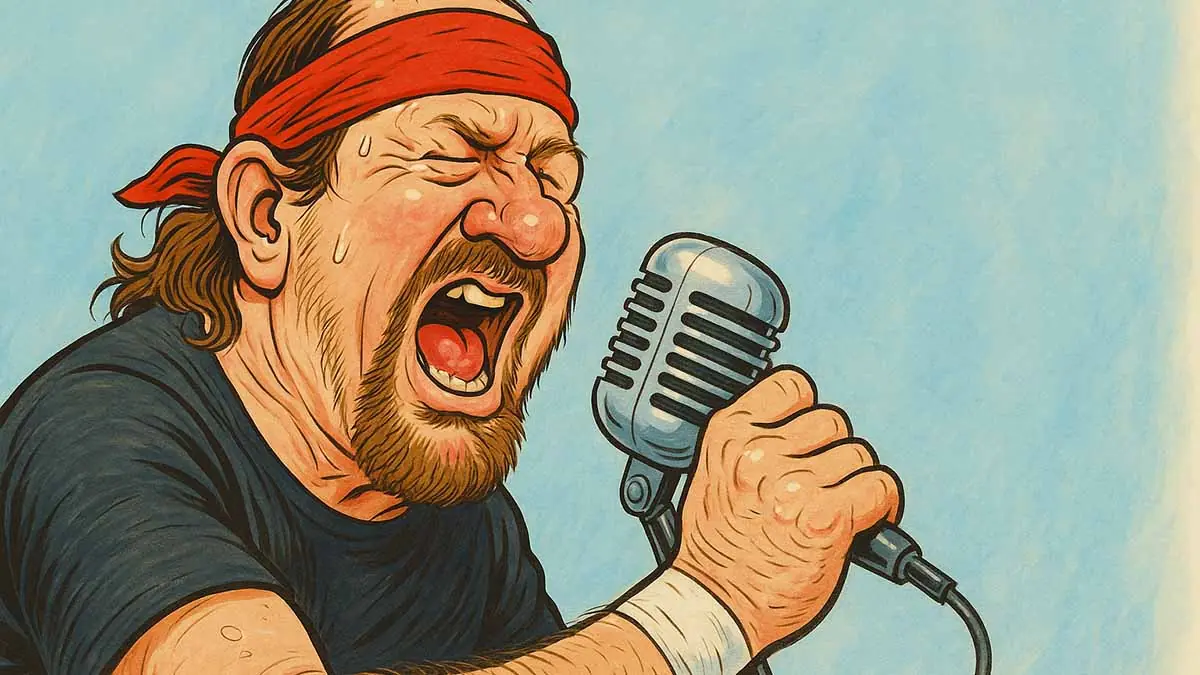Our Fight
By now, a lot of the more salacious and condemning aspects of Ronda Rousey’s second memoir, Our Fight, has circulated. Heck, the pre-release stuff was compelling on its own:
And it was only after WWE was basically arm-barred into it, following a global social media backlash to #givedivasachance after Divas were given a total of thirty seconds — less time than it takes most people to read this paragraph — for a nationally televised tag match. Four women were given less time to collectively wrestle than every single man on the roster got for his intro music alone.
Presented this information as a person outside of the wrestling world you might draw the conclusion that there is a troubling foundational sexist, patriarchal culture within the WWE. You would be right. I have nothing but respect for the female wrestlers who paved the way for women wrestlers today. And nothing but disgust for the amount of sexist, degrading bullshit they were put through.
But Our Fight, which came out in April 2024, and written with her sister, journalist Maria Burns Ortiz, has so much more going for it than the headline-grabbing slams.
I’ll go so far that this book is by far the best behind-the-scenes detailing of WWE since JJ Dillon’s book, Wrestlers Are Like Seagulls-From McMahon To McMahon, which was published under Scott Teal’s Crowbar Press imprint, so never got the mainstream attention that Rousey will get. Dillon was open about everything, but he also didn’t burn bridges and knew he’d continue to work with or at least see colleagues down the road.
With Rousey’s book, though, there’s so much disturbing and wrong to a non-wrestling fan that they will be left truly aghast and disgusted by the WWE as a corporate entity in the pre-Endeavor ownership days.
But for those of us who have followed wrestling for years, it’s more of a confirmation than a surprise that WWE under Vince McMahon especially was a pretty messed up place.
- – “WWE’s Emperor Palpatine … It’s hard sometimes to know where the evil, unethical, slimeball character of Vince McMahon played out for the cameras ends and the actual questionably ethical, many times sued, and multiple times accused of sexual misconduct Vince McMahon begins.” (p125)
- A lesson from from Windham Rotunda, who wrestled as Bray Wyatt (p158): “Just so you know, these people aren’t your friends,” he said. “No matter how nice they are, no matter what they say or how they act, we’re always just going to be pieces of meat to them. Get in, make your money, and get out.” Then shortly after, Rousey writes, “It was the first time someone said aloud what I had started feeling.”
- “Before joining WWE, I had understood it was a business, but I had been under the impression it was run more like a multibillion-dollar sports franchise or major entertainment studio than like a two-bit circus run by a bunch of carneys. It’s fitting that the WWE prides itself on its social media presence and one billion combined followers because its elite, big budget organizational image is about as real as an Instagram filter.” (p158)
- “The official rationale WWE gives for requiring everyone to be on hand for every event is that injuries can occur and having all talent there makes it possible to swap someone in if necessary. The truth is WWE wants everyone there because they don’t have a fucking clue what they are actually doing until the last minute.
…
“There were never actually plans, just changes in plans. I was aware WWE was scripted but could have never imagined that those scripts—in some cases full monologues—would be delivered on the day of taping, only to be replaced three or four times over the course of a few hours, single word changes highlighted yellow in an ongoing series of completely unnecessary tweaks that ‘Vince wants.’ If you deviated from a hastily changed word or two, you’d hear about it later.”
- “Perhaps the biggest kayfabe is that WWE is actually run like a functioning company and not the absolute fiefdom of one man. Nothing gets done at WWE without Vince’s approval. Story lines are scrapped at the last minute on his whim, sending writers and segment producers scrambling to come up with something new. Outcomes of matches change at the last second, sometimes during the match itself. Segments are cut. Monologues rewritten. And everyone just accepts it with a shrug.” (p163)
- – “The longer I spent in WWE, the more I became convinced that in addition to being helmed by a megalomaniac, its creative team was made up of a room full of guys who were the kids in high school who waited until the last night to do a semester-long project. And not the able-to-pull-it-off whiz kid types.” (p174)
- “Whereas Triple H looked for talent and potential in NXT prospects, it appeared John Laurinaitis looked for fuckability.” … “Laurinaitis was only a symptom of what was wrong within WWE.” (p212)
- Bruce Prichard was another Vince McMahon crony. If ‘What did you say you do here?’ was a person, it would be him. No one knew exactly what his job was or how he got it. He was the type of guy who carries a briefcase just so it looks like he’s doing something, yet somehow, he’d wormed his way up to executive producer, handpicked by Vince because he knew Bruce was the kind of guy you could control from a distance through an earpiece. (p223)
Because she never came up through the indy wrestling system, it’s all fresh to her and a reminder of how weird the business actually is.
The Olympian had a unique take, but with a different sport: “If WWE were to be judged as a truly competitive sport, the best scoring system to apply would come from one of the most unlikely places: pairs figure skating. Wrestling isn’t about brutality, but about flawlessly coordinating your movements in synchronicity, making sure everyone is hitting their mark, even if that means making on-the-fly adjustments. If the adjustments are on point, no one will ever know.”
And I loved her take on house shows: “Live events are a throwback to the independent circuit days. It’s a scaled-down crew responsible for a scaled-down setup, not much more than a couple of jumbo screens, a few sets of lights, and a ring. … I was unaware of live shows’ existence before I found myself regularly performing in them, but they quickly became my favorite stage. They feel like the twenty-first century version of the old-timey circus, where you roll into a small town, and everyone excitedly comes out to watch the performance. They’re not about reading overly dramatic promos, overly produced constantly changing segments, or the glam of hair-and-makeup. They’re just about going out, doing cool shit in the ring, and interacting with the crowd.”
That gives you a pretty good overview about the wrestling side of Our Fight but there a heck of a lot more to it — but it isn’t a full on biography. My Fight / Your Fight, also written with Maria Burns Ortiz, came out in May 2015 and is much more of a true autobiography, covering her upbringing, learning to fight, the judo competitions and Olympics, and getting to the top of MMA and UFC.
To cover off for those who are reading about Rousey for the first time, I’d say that Our Fight gives a broad overview of all that, better than a Wikipedia entry but not a lot more. Which is fine. It works.
It starts off with her worst day, losing to Holly Holm in Australia — and it’s notable that Holm is not mentioned by name in that early chapter. Many will see Rousey’s detailing of losing the fight for the UFC Women’s title as excuse after excuse, but I say it as detail after detail, and a fascinating trip into what goes into a top-tier fight when you are the champion. Rousey was done wrong by UFC head honcho Dana White was my takeaway, but it might not be yours, which means it’s all a bit open-ended and subject to interpretation.
Then there’s the personal stuff, a relationship that falls apart where she doesn’t mention the beau (Brendan Schaub) in writing but has on subsequent appearances. Her love story with Travis Browne is next and is heartwarming but never gets to the point of saccharine. She bravely puts a lot out there, including a miscarriage. Then there’s the birth of her daughter, La’akea Makalapuaokalanipō Browne, who they just call Pō, which comes in between her two WWE runs, convenient for this narrative.
I truly enjoyed Our Fight because I always get something out of reading a memoir, even more when I learn a lot about a subject I am not hugely familiar with, like MMA/UFC.
But wrestling fans will get a real kick out of Our Fight for illuminating so much of the backstage WWE drama.




